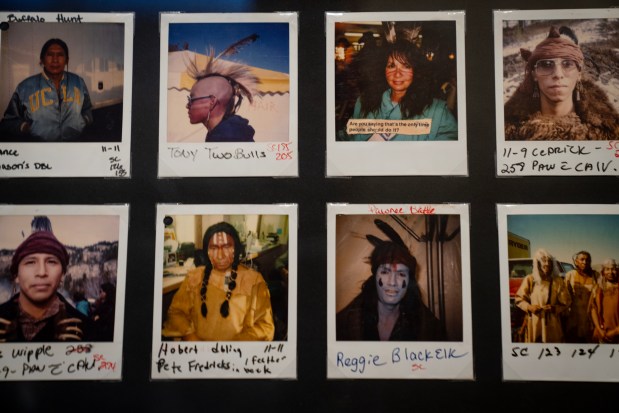I was in a dune buggy perched atop a sandy ridge near the small oasis town of Huacachina, Peru, looking down a nearly 60-foot drop. As the driver gunned the engine, I began to question my decision to sign up for this tour.
Down we went. I closed my eyes and screamed, and then, as the dune buggy pitched upward and slowed, the scream became a laugh. I opened my eyes to find us stopped on top of another sandy ridge, this one with a breathtaking view: Before us, an ocean of beige ripples cast black shadows in their troughs.
The driver killed the engine and silence swaddled us. I climbed out of the buggy and plunked down on the soft, warm sand, as the sun eased down on the horizon.
To think I’d almost missed this.
Just a few hours before, I had been sitting on a bus making its way south along the coast when a new friend, Dax, asked if I’d signed up for the dune buggies in Huacachina — our next stop. “Oh, no, I don’t do things like that,” I’d answered.
“Yeah, neither do I,” said Dax. “But I’ll do it if you do.”
The beauty of the in-between
When I was planning my trip to Peru last spring, I’d picked three cities, Lima, Arequipa and Cuzco, drawing a neat triangle of flights on the map. But there were two big problems with that itinerary: Flying would mean sudden shifts in elevation and possible altitude sickness, and I would miss everything between those cities.
Then I discovered Peru Hop, a roughly decade-old hop-on, hop-off bus service that offers flexible itineraries and dates, giving travelers the freedom to stay longer at any stop they want to explore further. It seemed perfect.
There are other, less expensive bus companies crisscrossing the country, including public routes where pickpockets are a risk. Peru Hop, however, offers recommended tours and accommodations, easily signed up for through the website, an app or even aboard the bus. Peru Hop also offers door-to-door pickup and drop-off in most places.
I chose the Full South to Cuzco line, which starts in coastal Lima and stops in Paracas, Huacachina, Nazca, Arequipa, Puno and Cuzco. While this line takes six days and five nights, I tacked on some extra time in a few places, making my trip two weeks long. I planned to start in Lima and end with the kaleidoscopic Red Valley and Rainbow Mountain, a hike that includes a brutal straight-to-the-top stretch at a lung-busting 16,000 feet above sea level.
A standard ticket on that line costs $219; I paid an extra $10 for the VIP ticket, which offers a little more flexibility. Excursions cost extra, and most ranged from $19 for the dune buggy ride to $39 for Rainbow Mountain. I booked on the Peru Hop website well ahead and paid in U.S. dollars.
Along the way, I left space for serendipity. Because Peru Hop isn’t a traditional tour, you can play along or do your own thing. It turned out that this combination of structure and freedom opened doors for me to visit places and do things I never imagined.
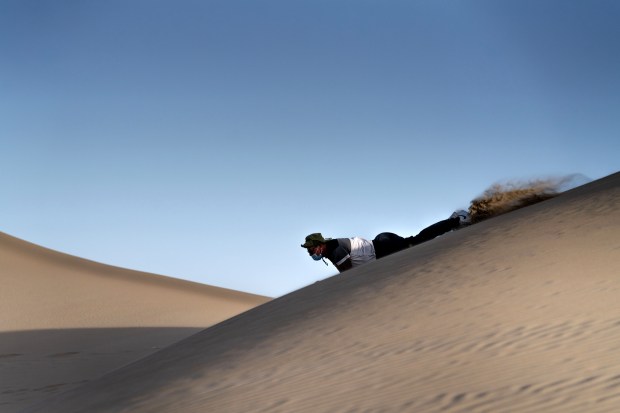
Letting dolphins lead the way
The edge of the golden desert collides with the navy blue Pacific Ocean in the town of Paracas, which means “rain of sand” in Quechua, Peru’s most widely spoken Indigenous language. Strong winds, often topping 50 mph, make Paracas popular with kitesurfers.
At Paracas National Reserve — where the salt-spiked sand glittered under my feet, lending the place a magical feeling — I stood on the edge of a cliff and experienced a gust so strong, I was certain I would be lifted off the ground.
“This is a landscape you record with your soul,” said one guide.
After a night at the simple but clean Peru Hop-recommended Hotel Residencial Los Frayles ($43), at dawn the next day, I joined two fellow Hopsters, Ernesto and Stephanie, a brother and sister from El Salvador, for a kayak tour of Paracas Bay. Pushing off from the shore, we paddled so close to a pair of dolphins that we saw drops of water spraying from their blowholes as they exhaled. Enchanted, we followed the dolphins for so long that we had to run to catch our scheduled boat tour to the Islas Ballestas.
Sometimes called the Poor Man’s Galápagos, the Islas Ballestas offer a dizzying array of marine life but are far easier to reach, only about 10 miles off the coast. Even though choppy waters cut our tour disappointingly short, we glimpsed sea lions lounging on a wedge of rock, Humboldt penguins balanced on tiny ledges and colorful crabs skittering across islands of stone that rose straight out of the sea. We also saw the Paracas Candelabra, a mysterious geoglyph on a seaside hill, keeping silent watch over the waves and wind.
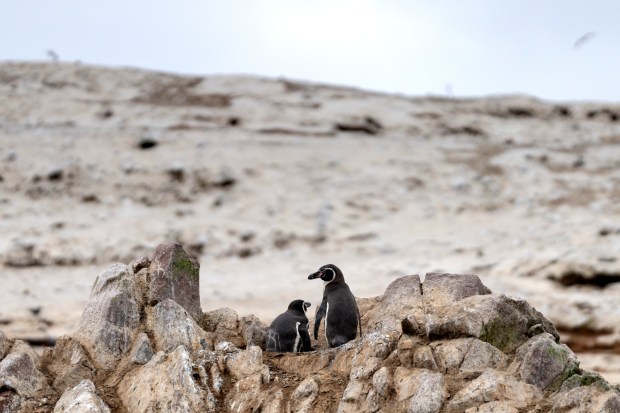
The candelabra whetted our appetites for its much larger cousins, the Nazca Lines, which we reached by bus after our dune buggy adventure in Huacachina, where I spent one night at the Hostal Curasi ($60). Its rooftop restaurant offered stunning views of the surrounding sand dunes.
Many tourists fly over the Nazca Lines, etched on a coastal plain, to glimpse them from above. From the bus, I got a different view: As we passed the geoglyphs, I saw what appeared to be random tracks in the desert. They looked like the careless work of teenagers driving their cars on the beach rather than something deliberate. I was sure the signs announcing the Nazca Lines were mistaken.
But from the top of the observation tower, they popped into focus: a lizard, a tree and outstretched hands that reminded me of a leaping frog. I envisioned ancient people moving through this vast, arid landscape, working toward a collective vision of how the lines would appear from above. The feat seemed even more astounding after I had traversed the same miles aboard the bus.

Rocked to sleep on a floating island
In Puno, on the shores of roughly 12,500-foot-high Lake Titicaca, I strayed from the Peru Hop itinerary because it didn’t offer an overnight option on the water. I felt I couldn’t pass up the opportunity to stay on one of the floating reed islands built by the Indigenous Uros people, who believe the lake to be the birthplace of the sun.
Once my Airbnb host had docked and let me into the one-room house I’d booked for the night ($137), I snuggled up under thick blankets in a king-size bed and peered out a wall of floor-to-ceiling windows toward the water. Gray clouds so heavy they reminded me of granite lumbered onto the lake. A thick bolt of lightning connected sky and shore, and soon, rivulets of water were streaking the windows. The reed island rocked ever so gently, and the steady beat of raindrops on the tin roof lulled me to sleep.
The next night, I began the last stretch of my journey — boarding an overnight bus to Cuzco, where the gorgeous Tierra Viva Hotel ($105 a night) would be my home base as I prepared for my most challenging adventure, Rainbow Mountain, on a tour I had booked through Peru Hop.
Up into the sky
The cold minivan that ferried a dozen other tourists and me to Rainbow Mountain set out from Cuzco at 3:30 a.m., bouncing along the cobblestone streets. Soon, we were in the countryside, where the morning fog made it seem as if we were driving through the sky. And then we were racing along a wisp of a dirt road carved into the side of a mountain, Andean huayno music blasting from the speakers as we jostled along the edge of a terrifying drop-off.
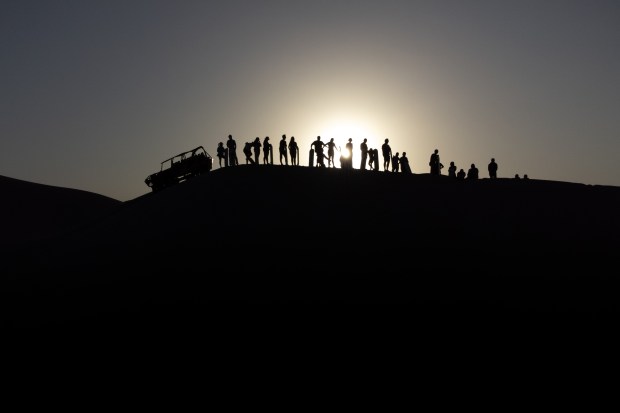
Once we had reached the Rainbow Mountain parking lot, which sits at an elevation of roughly 15,000 feet, our guide urged us to try a two-minute test hike on a gentle incline. When we regrouped, some of us were already winded. The guide explained that the peak was about a mile and a half away and that, at this altitude, it usually took people about 45 minutes to reach the top.
If we were struggling now, our guide warned, it was just going to get worse. Anyone concerned about making it to the top, or who wanted to conserve energy for the hike to nearby Red Valley, could pay 15 soles, about $4, to take a motorbike or ride a horse most of the way up. Neither option would take us all the way. Eventually, we’d have to walk.
Starting on horseback, I discovered you don’t actually climb Rainbow Mountain. You ascend a sandy path on an adjacent mountain so you can get a look at the colorful stripes. After dismounting, I began the final stretch to the summit, and Rainbow Mountain rose before me, one stripe at a time, looking like some divine entity had carefully painted neat bands of color on an enormous canvas and then laid the whole thing across the mountain, blanketing the rock with burgundy, yellow, teal and purple.
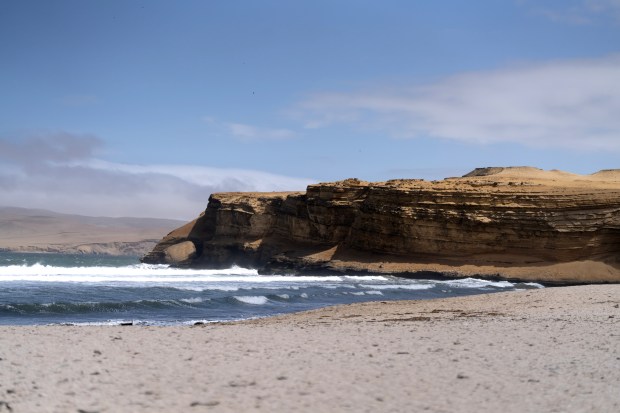
At the summit, I snapped some photos and then, dizzy from the lack of oxygen, descended. At the bottom, I handed my guide an extra 20 soles for access to the trail that led to Red Valley, and then veered off to begin the approximately half-mile hike, this time along a footpath so narrow I was certain I would tumble off and roll down the sandy slope.
Unlike Rainbow Mountain, Red Valley doesn’t appear little by little on the horizon. There’s no sense of where you’re going and when you will get there. Closer to the sun than I’d ever been, its rays beating down on me, I stopped for a moment and tried to figure out how much farther I had to go. My legs shook.
Just when I was about ready to give up, I reached the crest, and suddenly a blanket of vermilion appeared, the color made sharper by the olive green grass serpentining through the lowest point of the valley. Beyond that, there was nothing: no roads, no houses, no people. Just buckles of brown mountains, white clouds and the blue, blue sky.
I thought back to that guide’s wise words back in Paracas. This was definitely a landscape you record with your soul.



